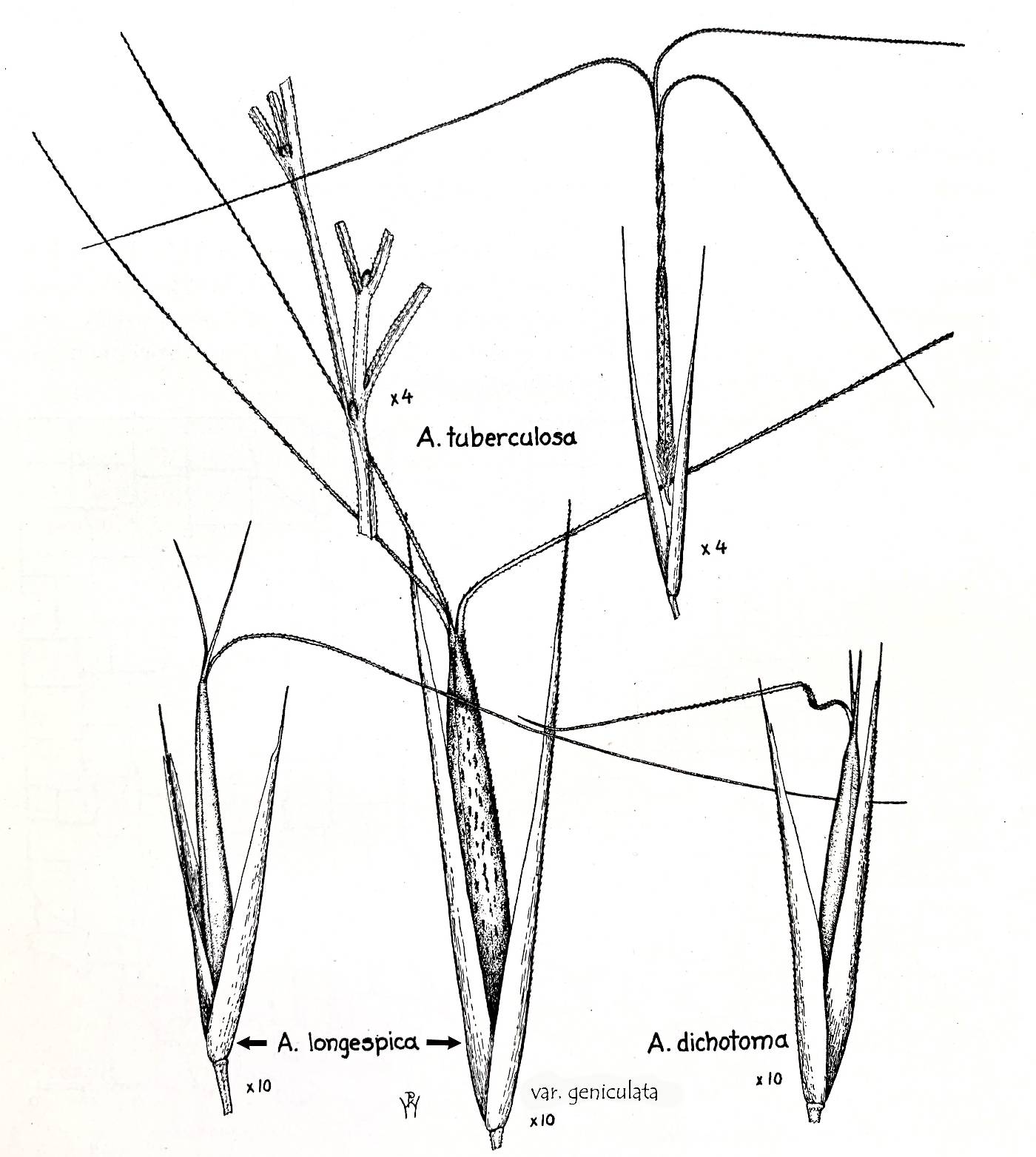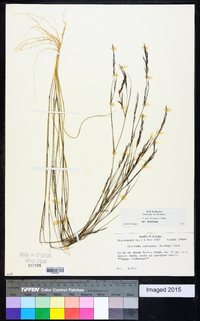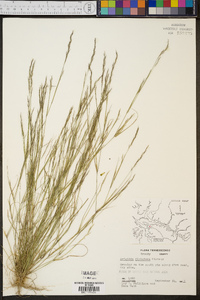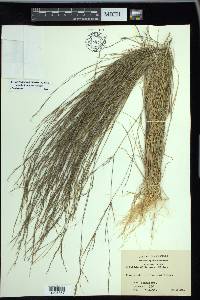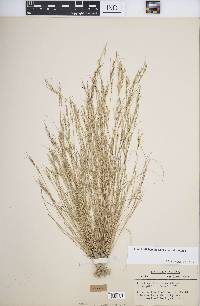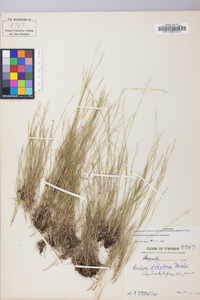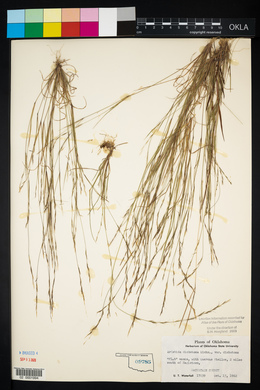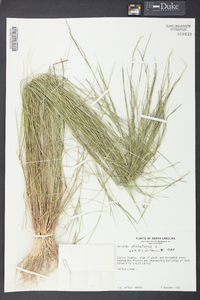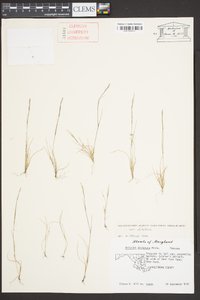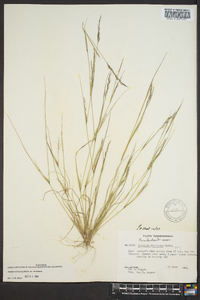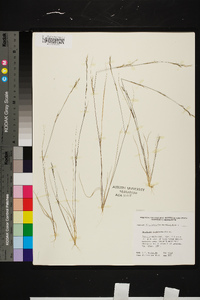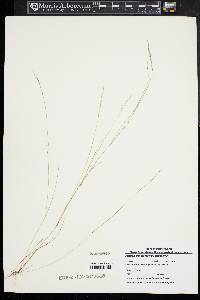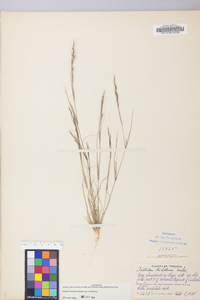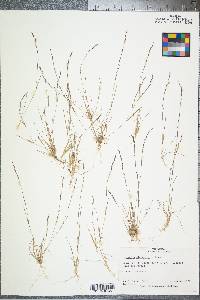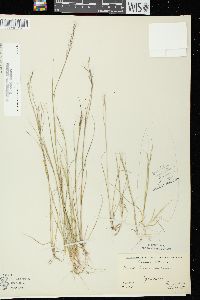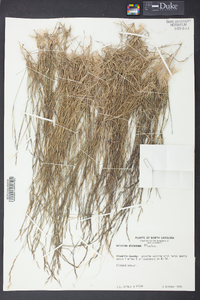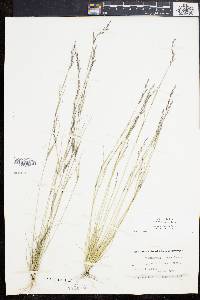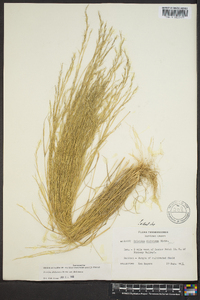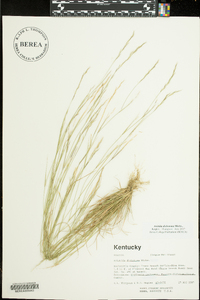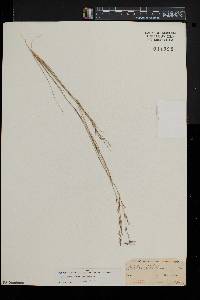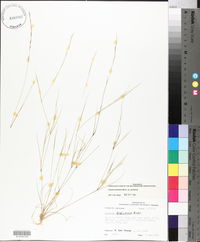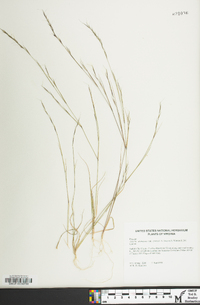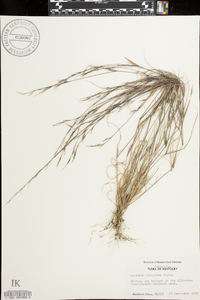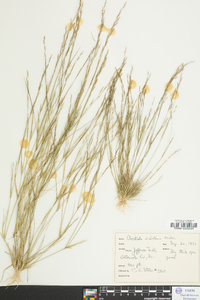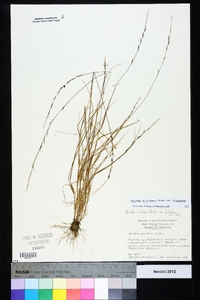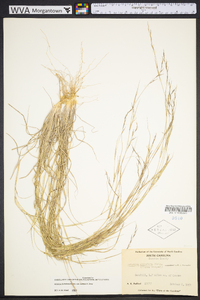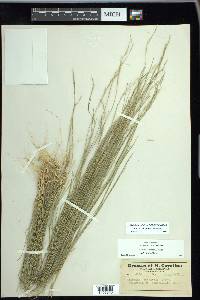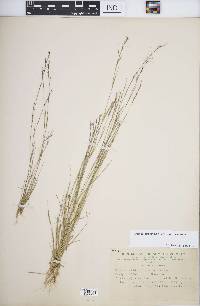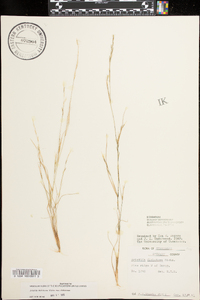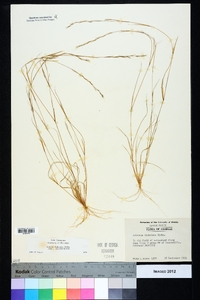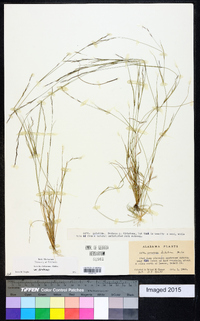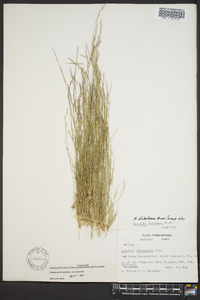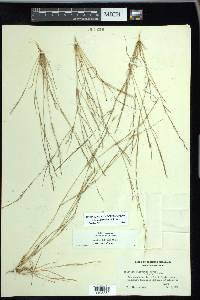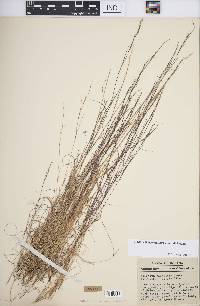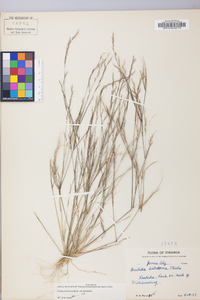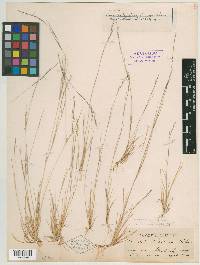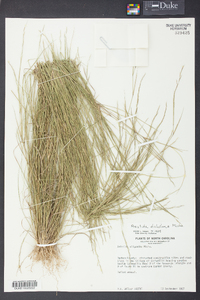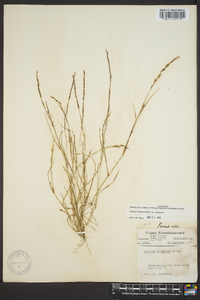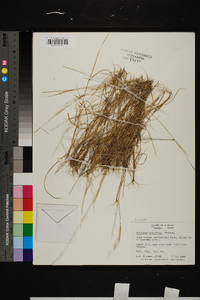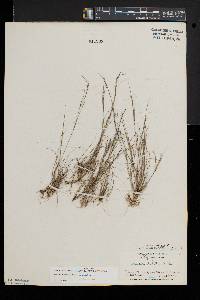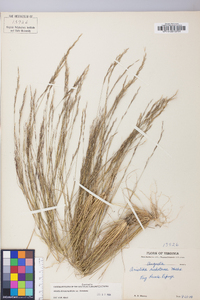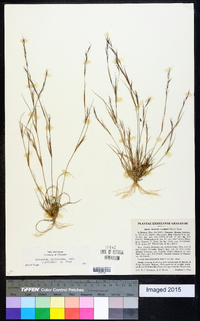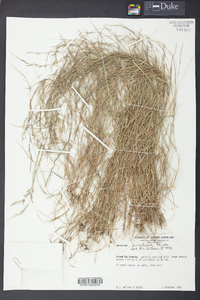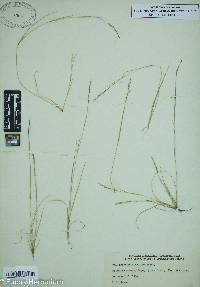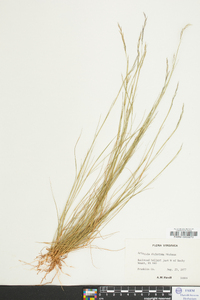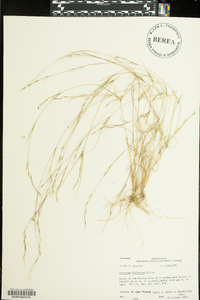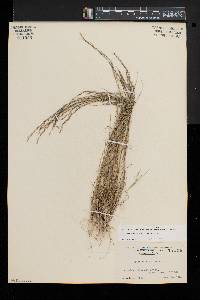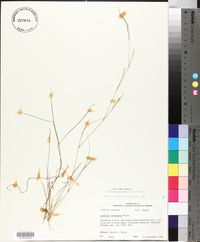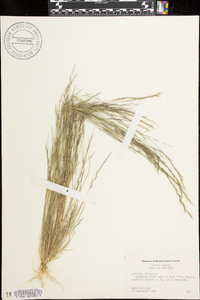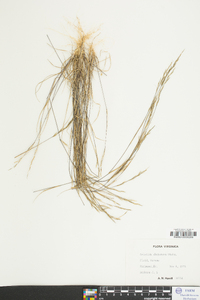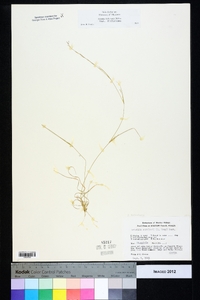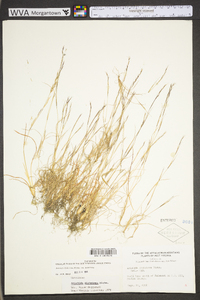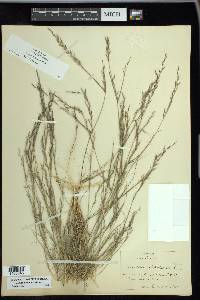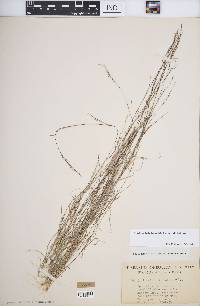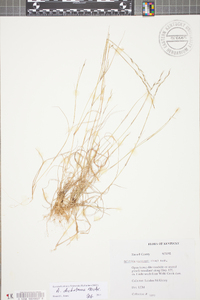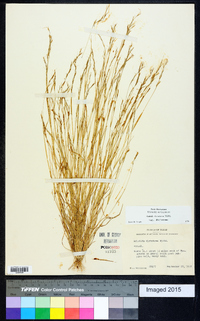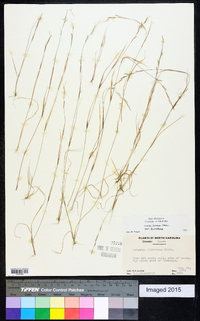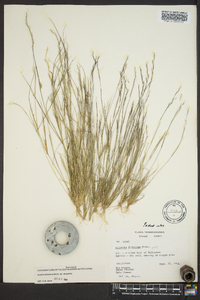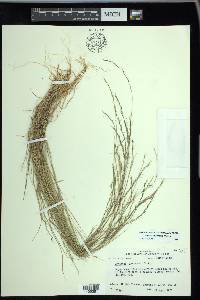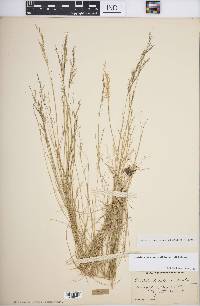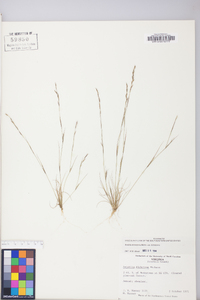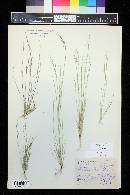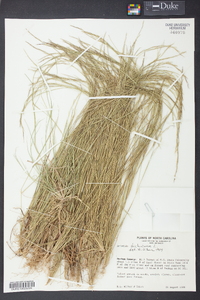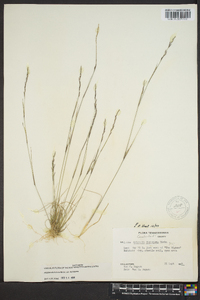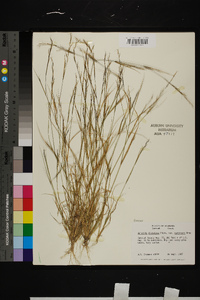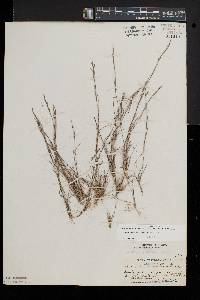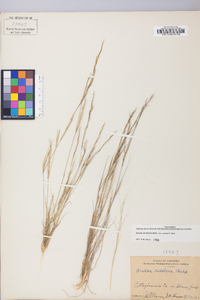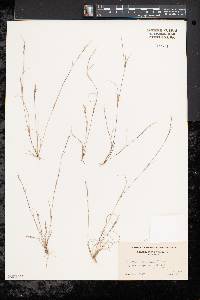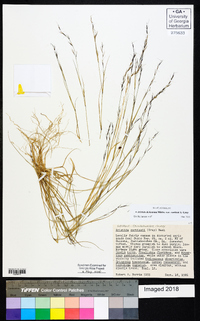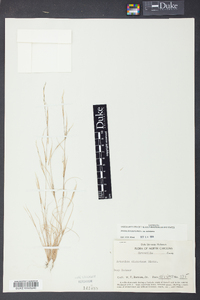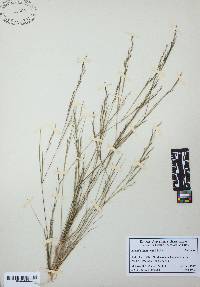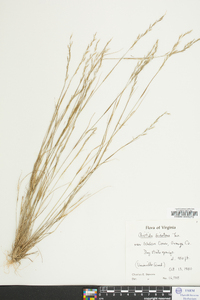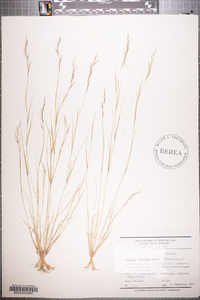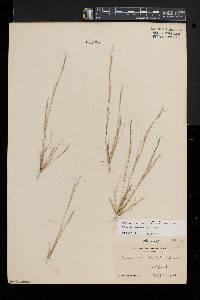Aristida dichotoma
|
|
|
|
Family: Poaceae
Church-Mouse Three-Awn, more...Churchmouse Threeawn
[Aristida dichotoma f. major Shinners, moreAvena paradoxa Willd. ex Kunth, Avena setacea Muhl. ex Trin.] |
Plants annual. Culms 15-60 cm, erect or geniculate at the base, branching at most of the nodes. Leaves cauline; sheaths usually shorter than the internodes, glabrous or sparsely pilose; collars glabrous; ligules less than 0.5 mm; blades 3-10 cm long, 1-2 mm wide, flat to folded basally, involute distally, scabridulous on both surfaces, occasionally sparsely pilose adaxially, light green. Inflorescences paniculate or racemose, 2-11 cm long, to 1 cm wide; nodes glabrous or strigillose; primary branches 1-2 cm, appressed, without axillary pulvini, with 1-2 spikelets. Spikelets partly overlapping, often in pairs, 1 spikelet subsessile, the other pedicellate. Glumes 1-veined, light gray to dark purplish or brownish; lower glumes 3-8(10) mm, from 1/2 as long as the upper glumes to nearly equaling them; upper glumes 4-13 mm; calluses 0.3-0.5 mm; lemmas 3-11 mm, light gray to purplish, frequently mottled, midveins scabrous, elsewhere glabrous, scabridulous, or sparsely appressed-puberulent, junction with the awns not evident; central awns 3-8 mm, coiled at the base, spreading distally; lateral awns 1-4 mm, straight, erect; anthers 3 and 2-3 mm, or 1 and about 0.25 mm. Caryopses light brown. 2n = unknown. Aristida dichotoma grows in sandy fields and clearings, disturbed sites and sterile ground, pine woods, and on granitic outcrops of the United States and southern Ontario. The two varieties have similar ecological preferences and extensive overlap in their ranges, but var. curtissii is somewhat more western in its distribution. Aristida dichotoma is similar to A. basiramea, differing in its shorter lateral awns. Further study may show that the two should be treated as conspecific varieties. Annual herb 15 cm - 0.71 m tall Leaves: borne along the culm, with open sheaths that are often shorter than the internodes and hairless to sparsely hairy with a hairless collar. The ligules are made of hairs less than 0.5 mm long, and the blades are light green, 3 - 10 cm long, 1 - 2 mm wide, flat to folded at the base, pointed with margins rolling toward the upper surface of the midvein (involute) at the tip, minutely rough on both surfaces, sometimes sparsely hairy above. Inflorescence: terminal, 2 - 11 cm long, to 1 cm wide, with 1 - 2 cm long primary branches and hairless or minutely hairy nodes. Fruit: a light brown, spindle-shaped caryopsis with a linear scar. Culm: erect or with abrupt bends at the nodes (geniculate), 15 cm - 0.6 m long, branching at most nodes. Spikelets: one or two per branch, usually in partially overlapping pairs with one nearly stalkless and the other stalked. Glumes: light gray to dark purplish or brownish, thin, single-veined, with pointed tips. The lower glume is 3 - 10 mm long and the upper glume is 4 - 13 mm long. Florets: one per spikelet, with three anthers 2 - 3 mm long or one anther 0.25 mm long. Lemma: light gray to purplish and usually mottled, 3 - 11 mm long, spindle-shaped, rolled up longitudinally (convolute), three-veined, with rough midveins and three awns. The central awn is 3 - 8 mm long and coiled at the base, and the straight lateral awns are 1 - 4 mm long and erect. Palea: shorter than the lemmas and two-veined. Similar species: Aristida tuberculosa is easily distinguished because its awns are twisted into an 8 - 15 mm column that separates into three straight awns at the top. Awns of Aristida oligantha are not twisted at the base and reach up to 7 cm in length. Aristida basiramea has a 10 - 15 mm long central awn that is twisted at the base and 5 - 10 mm long lateral awns, while Aristida longispica has a 1 - 27 mm long central awn that is curved at the base and lateral awns (if present) reaching 18 mm long. Awns of Aristida purpurascens are curved to arching or twisted at the base with the lateral awns about as long as the central one (8 - 25 mm long). Flowering: August to October Habitat and ecology: This species may be introduced but the true native range is unknown. It grows in dry fields and along railroads and roads. Occurence in the Chicago region: native Etymology: Aristida comes from the Latin word arista, meaning awn. Dichotoma means forked. Author: The Morton Arboretum Tufted annual 2-4 dm, erect or ascending, branched from the base; lvs filiform, mostly involute, or the lower flat; terminal panicle 3-8 cm, very slender, often reduced to a raceme; lateral infls much shorter, mostly enclosed in the subtending sheaths; glumes subequal, mucronate, 1-veined, 5.2-10.5 mm; lemma 4.4-9 mm; central awn 3-10 mm, its base nearly horizontally divergent and loosely coiled, usually in a half to one full turn; lateral awns straight, erect, 0.7-3.3 mm. Dry sandy or sterile soil; Me. to Mich., Io., and Kans., s. to Fla. and Tex. Gleason, Henry A. & Cronquist, Arthur J. 1991. Manual of vascular plants of northeastern United States and adjacent Canada. lxxv + 910 pp. ©The New York Botanical Garden. All rights reserved. Used by permission. From Flora of Indiana (1940) by Charles C. Deam Indiana Coefficient of Conservatism: C = 2 Wetland Indicator Status: FACU |

